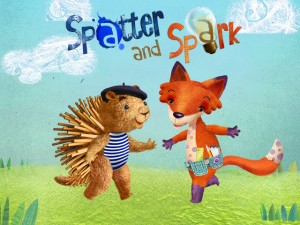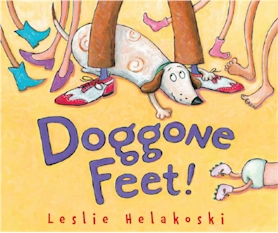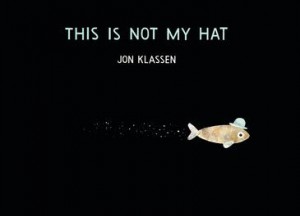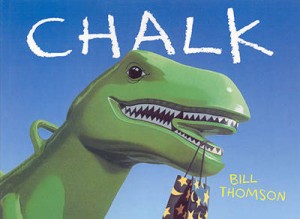 Perhaps my dilemma is familiar to you. I have an iPad, and I want a great picture book app to share with early elementary students. With my tiny budget I’m always on the hunt for the free, but I also like good stuff, and unfortunately, that combination of free and good is often hard to find. Here’s an app that fits the bill – Spatter and Spark.
Perhaps my dilemma is familiar to you. I have an iPad, and I want a great picture book app to share with early elementary students. With my tiny budget I’m always on the hunt for the free, but I also like good stuff, and unfortunately, that combination of free and good is often hard to find. Here’s an app that fits the bill – Spatter and Spark.
Spatter and Spark is a free picture book app from Polk Street Press. It’s an original story written by the talented and rockin’ cool Deborah Underwood with superb illustrations by Luciana Navarro Powell. Spatter is an artistic porcupine who would like to paint a picture of the baby crow, Hubert, as a gift. The problem is that Hubert is not quite ready to fly down from his nest, so Spatter isn’t sure what Hubert looks like. Spatter asks his inventor pal, Spark, to help him with his problem. She suggests that if Hubert can’t come down, Spatter should go up. Spark invents bouncy shoes for her and Spark to wear and the problem seems solved – until they are bouncing too high! The reader helps to save the day, and that’s one of the best things about apps like this: they encourage reader interaction.
The art for Spatter and Spark is large enough for a whole class to enjoy, but I think it’ll be best used either in small groups or 1-to-1 because readers can help build and paint the bouncy shoes (Spatter is an artist and must make the shoes sparkly!) I love how the shoes we see Spatter and Spark wearing as they bounce are painted exactly the way I chose, a bit of tech magic that delights me. There are activities within the app that can be purchased, but I want to use this with students to talk about Key Ideas and Details.
This story starts with one problem, but one answer doesn’t automatically save the day; the solution leads to another problem. After sharing this picture book app with your students, have them fold or divide a piece of paper into thirds labeled First, Next, and Last (or keep it teched up by using a “show me” app like Educreations to write and draw). In the “First” third, students can show the original problem. In the “Next” third, students can show the solution to that problem, which also caused another problem! In the “Last” third, students can show how that second problem was solved.
Because Spark is an inventor, ask your students to get creative. Bouncy shoes were one way for the friends to get up high – what other ways might there be? Encourage students to draw (or create!) another invention that might work, and make sure to plan for any problems this new solution might cause. In honor of artistic Spatter, students should make the inventions beautiful as well as functional. (Gotta say, I love that the girl is the inventor and the boy is artistic!)
So if you have an iPad 2 or later, and you’re on the hunt for a free picture book that’s also high-quality, download Spatter and Spark!
For more information about Deborah Underwood, please visit: www.deborahunderwoodbooks.com.
For more information about Luciana Navarro Powell, please visit: www.lucianaillustration.blogspot.com.
For more information about Polk Street Press, please visit: www.polkstreetpress.com




